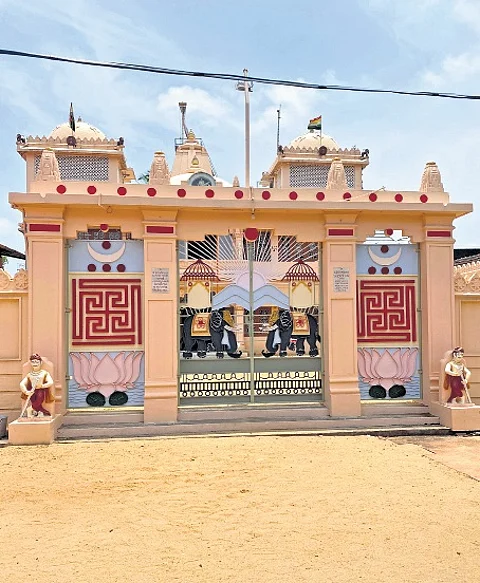

KOCHI: Everyday, a little past noon, hundreds of pigeons are seen descending on the roof of Dharmanath Jain Temple in Mattancherry to await the calls of Prafulbhai V Shah. As with other customs of this over-a-century-old temple, feeding pigeons is also a cherished ritual here.
“The tradition started about 19 years ago. Today, it attracts a lot of visitors to the temple. Anyone is welcome to feed the birds. You just need to call them with affection,” says Prafulbhai, a member of the Jain community.
Built in 1904, the temple is dedicated to the 15th Tirthankara. According to the locals, the birds are often seen since noon waiting patiently on the roof or on the temple premises for Prafulbhai to finish chanting prayers and feed them.
Even during a time when the entire country was torn by communal strives and rebellions, the Mattancherry community was welcoming of everyone — Gujaratis, Marathis, Kashmiris, Jews and Parsis. This is as true today as it was in the olden days, thus shaping the locality into a renowned cultural hub. Nowhere is this warmth more profound than at Dharmanath Jain Temple.
“After the port town of Muziris on the Malabar coast was destroyed by a Periyar in spate during the 14th century, Kochi evolved into a bustling trading centre. Traders from Kutch and Saurashtra started settling here in numbers,” says Prakash P, local historian and president of Changampuzha Samskarika Kendram.
According to him, the Jain temple was set up in memory of a wealthy trader by his wife Hirubhai Jivraj Dhanji.

“The Mulnayak or the main deity of the temple is Dharmananda,” Prakash adds. Its architecture is similar to the Jain temples of Gujarat. The whole marble interior of the temple is decorated with works of art, sculptured pillars and idols of Jain gods and Tirthankaras. “The idols worshipped here are from 1,000 years ago. There are 24 Tirthankaras in Jainism and their idols adorn the temple’s wall,” says Karishma Parekh, a Jain believer and member of the temple’s governing body.
There are two temples in this compound. While one has Dharmananda as its deity, the other has Chandraprabha. “When we were young, the temple was known as Velakku Kathikaatha Ambalam (temple without lights), as none of the lanterns were lit, even at night,” says V K Hamza, who runs a shop on Gujarati Road.
The temple is governed by Murtipujak Jain Sangh, which mainly includes Gujarati believers. There are about 350 Jain families in West Kochi, all of whom take an ardent part in the temple’s activities. The Paryushana or eight days of self-purification is an important annual holy event for Jain believers.
“Days like Mahavir Jayanti are not just auspicious for our community, but for entire Mattancherry. “The cultural harmony that is so engrained here is treasured by all. Love and non-violence are the tenets of Jainism. They are also the foundations of Mattancherry,” says Karishma.
There & Then
Weekly column on historic, iconic places in the city.
Send suggestions to xpresskochi@gmail.com